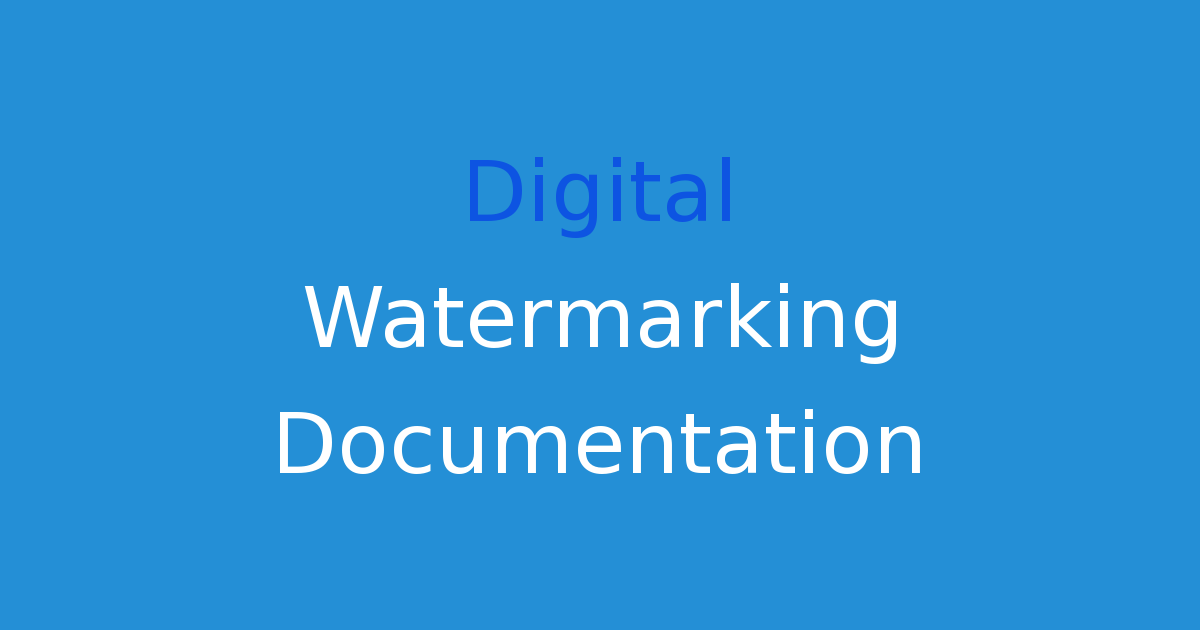Documentation for digital watermarking.
Introduction
Digital watermarking is a technology that is used to embed information into a digital signal, such as an image, audio, or video file. This information can be used to verify the authenticity of the digital signal or to track its ownership. In this project work, we will be focusing on the documentation of digital watermarking technology and proposing a new system to overcome the limitations of the existing systems.
Problem Statement
The existing digital watermarking systems have limitations in terms of robustness, security, and data capacity. These limitations make the systems vulnerable to attacks and reduce their effectiveness in protecting digital content from unauthorized use or distribution.
Existing System
The existing digital watermarking systems use various techniques such as spatial domain, frequency domain, and spread spectrum to embed information into digital signals. However, these techniques have limitations in terms of data capacity, robustness, and security.
One of the common disadvantages of the existing systems is that they are susceptible to attacks such as geometric distortions, signal processing attacks, and collusion attacks. These attacks can corrupt the watermark information and make it difficult to verify the authenticity of the digital content.
Disadvantages
1. Limited data capacity: The existing digital watermarking systems have limited data capacity, which restricts the amount of information that can be embedded into digital signals.
2. Lack of robustness: The existing systems are not robust enough to withstand attacks such as geometric distortions, signal processing attacks, and collusion attacks.
3. Security vulnerabilities: The existing systems have security vulnerabilities that make it easy for attackers to remove or alter the watermark information.
Proposed System
In this project work, we propose a new digital watermarking system that addresses the limitations of the existing systems. The proposed system uses advanced encryption techniques to enhance the security of the watermark information and increase the robustness of the system against attacks.
Advantages
1. Increased data capacity: The proposed system has an increased data capacity, allowing more information to be embedded into digital signals.
2. Enhanced security: The proposed system uses advanced encryption techniques to enhance the security of the watermark information, making it difficult for attackers to remove or alter the information.
3. Improved robustness: The proposed system is more robust against attacks such as geometric distortions, signal processing attacks, and collusion attacks, ensuring the integrity of the watermark information.
Features
1. Advanced encryption techniques: The proposed system uses advanced encryption techniques to enhance the security of the watermark information.
2. Increased data capacity: The proposed system has an increased data capacity, allowing more information to be embedded into digital signals.
3. Robustness against attacks: The proposed system is more robust against attacks such as geometric distortions, signal processing attacks, and collusion attacks.
4. Compatibility with different types of digital signals: The proposed system is compatible with different types of digital signals, including images, audio, and video files.
Conclusion
In conclusion, digital watermarking is a key technology for protecting digital content from unauthorized use or distribution. However, the existing systems have limitations in terms of data capacity, robustness, and security. In this project work, we proposed a new digital watermarking system that addresses these limitations by using advanced encryption techniques to enhance security, increase data capacity, and improve robustness against attacks. The proposed system shows great promise in advancing digital watermarking technology and ensuring the integrity of digital content in the future.

